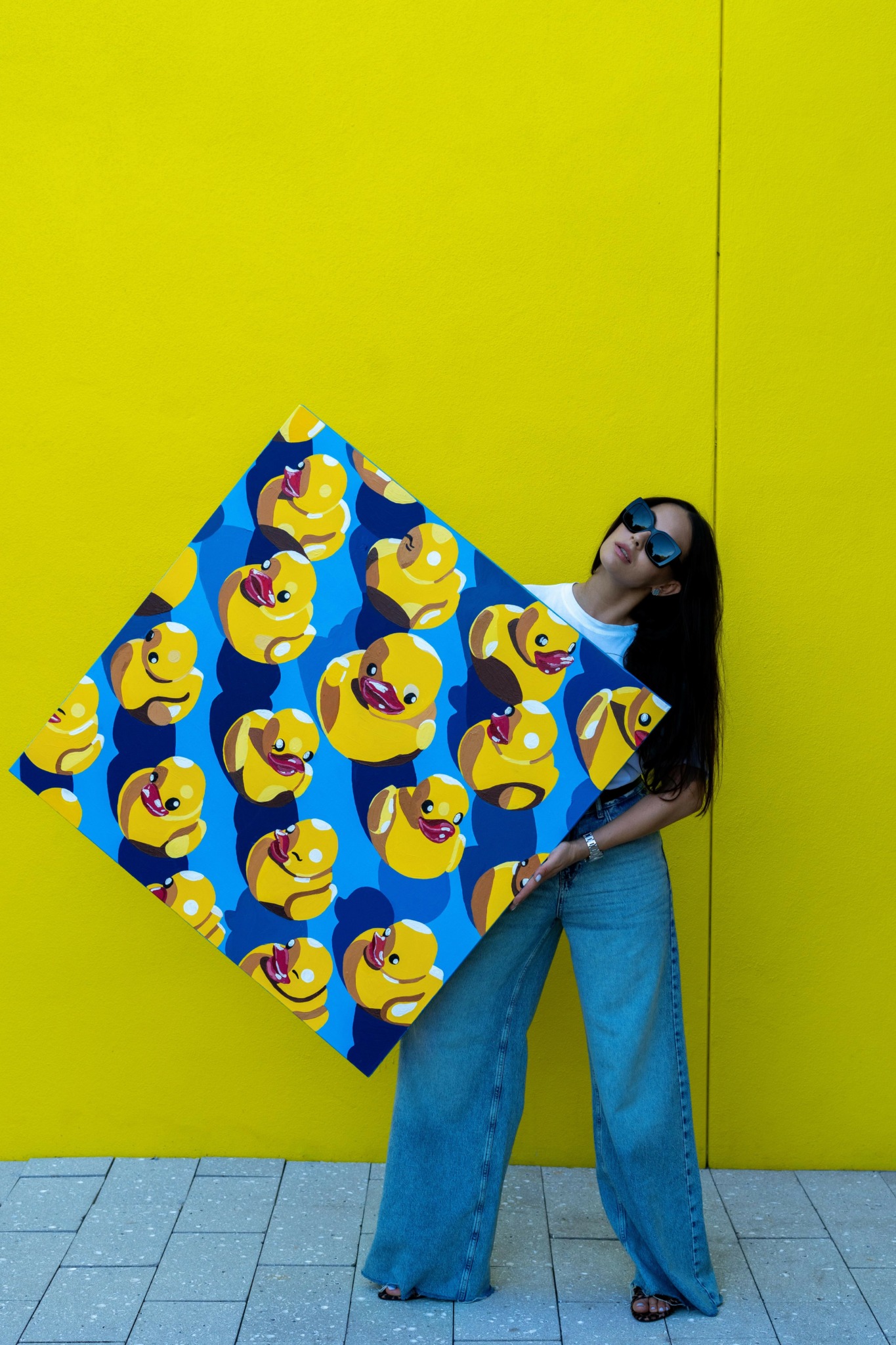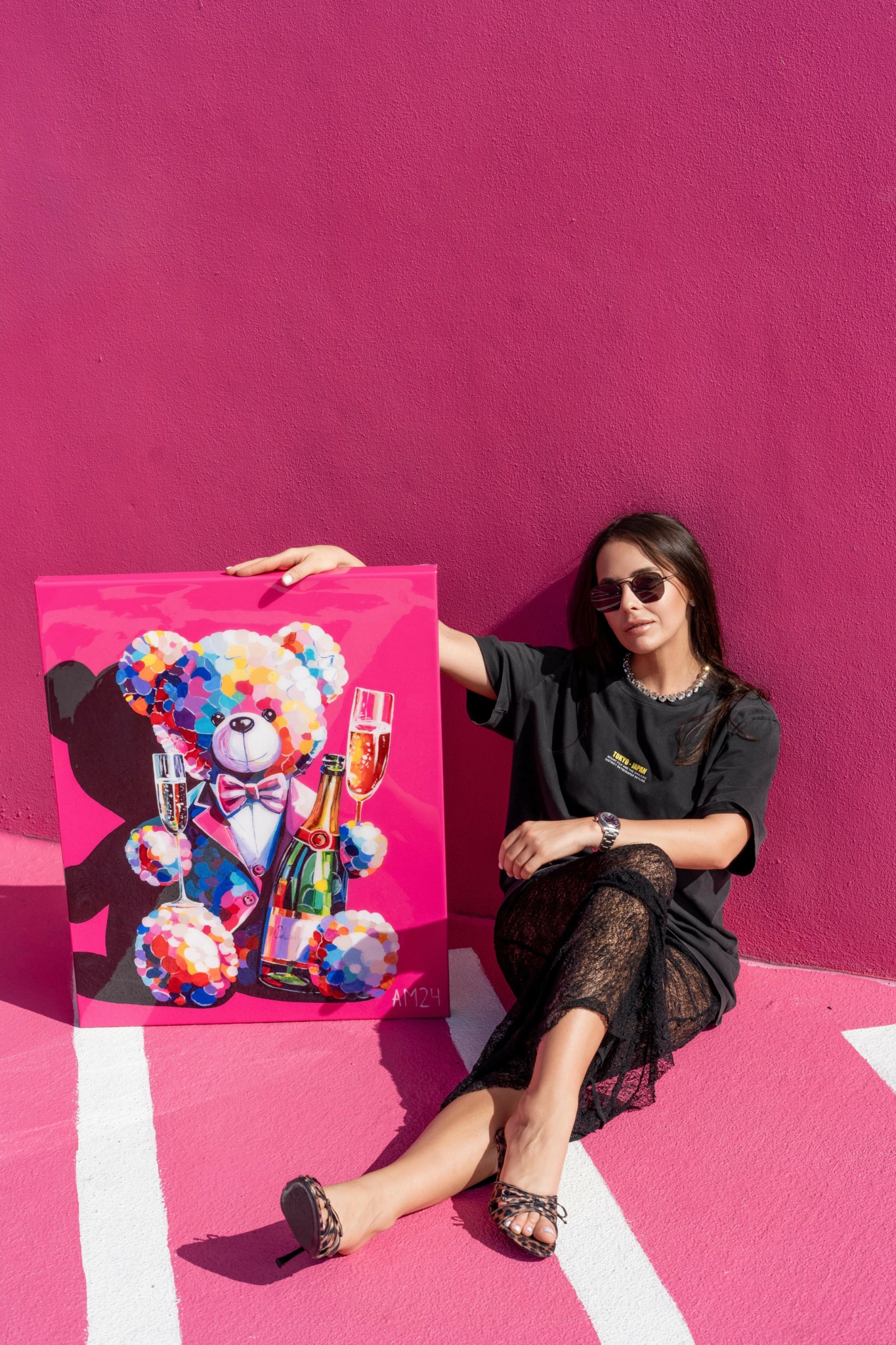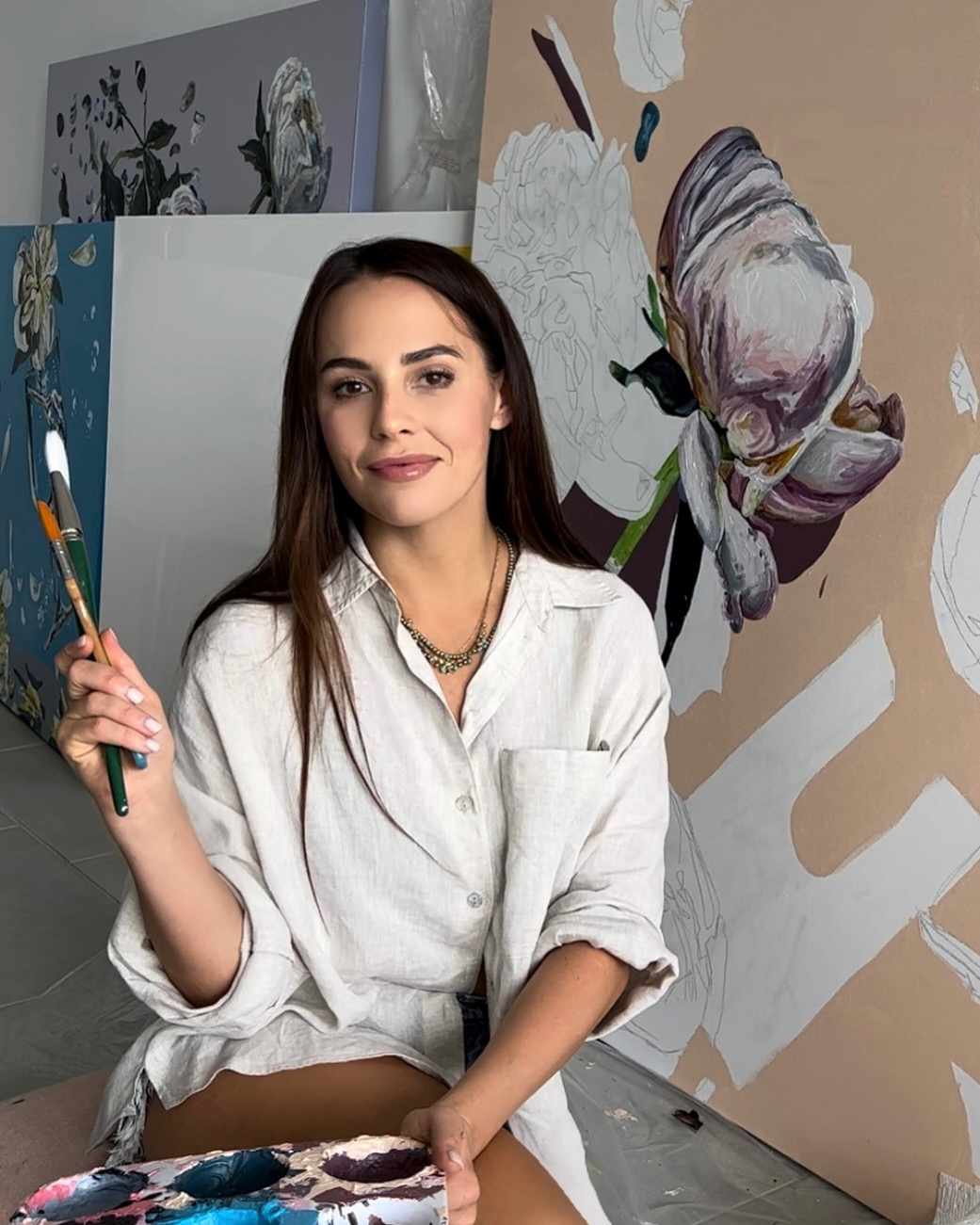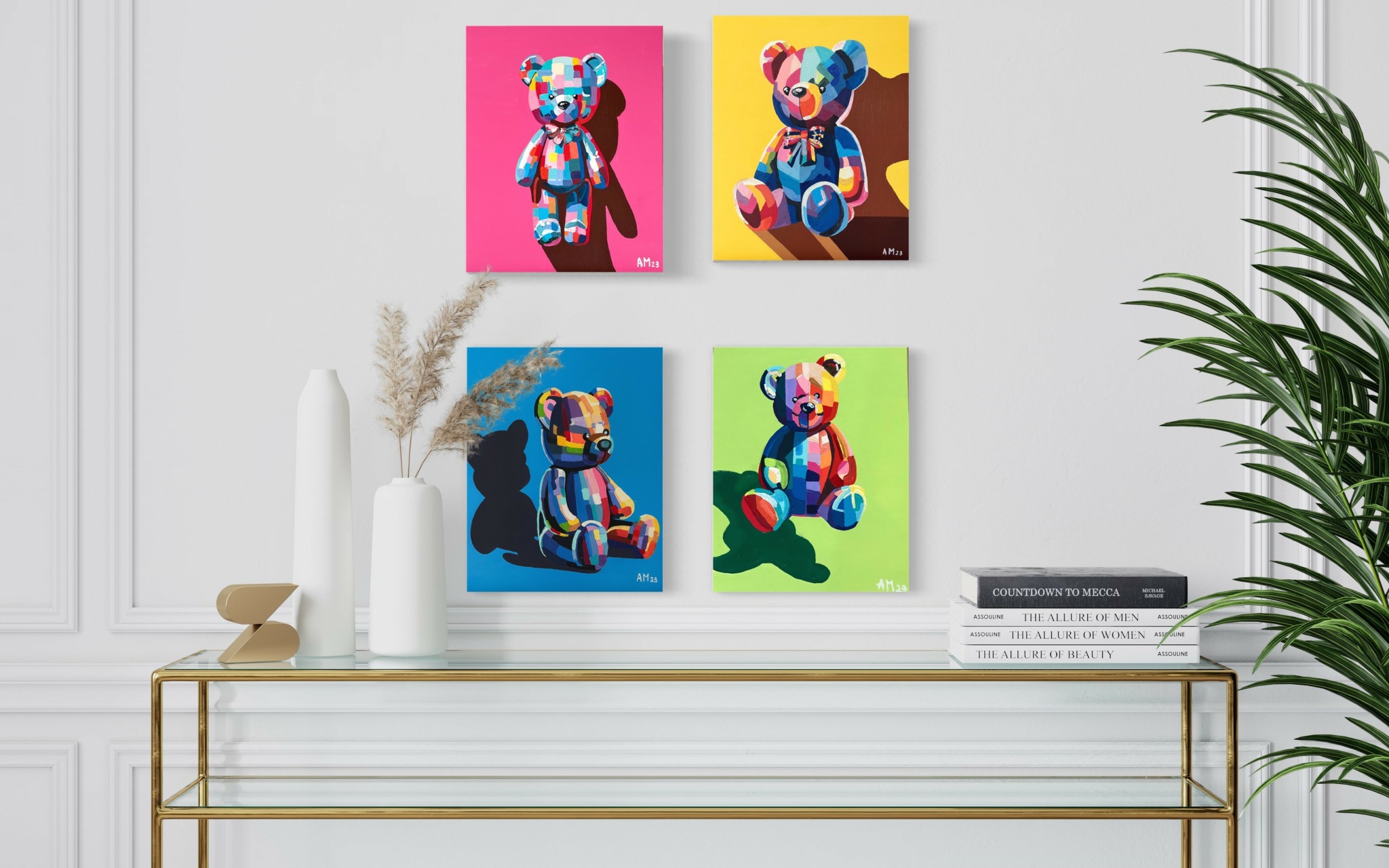We were lucky to catch up with Anna Meyster recently and have shared our conversation below.
Anna, appreciate you joining us today. The first dollar you earn is always exciting – it’s like the start of a new chapter and so we’d love to hear about the first time you sold or generated revenue from your creative work?
My artistic journey started early—I was just five when I first began learning how to draw and paint at a local art studio. I still remember the excitement of those classes; they felt like little adventures into a whole new world. I kept studying art throughout my childhood, but one moment that really stands out was when I was 15.
My art teacher, who had always been so encouraging, was putting together an exhibition and invited two of her students, including me, to display our work alongside hers. I was beyond nervous, but also incredibly excited—it was my first time showing my art in a real exhibition. I can still picture the room, the people walking around, and that mix of butterflies in my stomach. That day, I felt like a “real” artist for the first time.
But the real surprise came when I actually sold two of my artworks at the exhibition! I couldn’t believe it—I remember thinking, “Wow, people actually want to buy something I made!” The feeling was surreal, and I was so proud. I even remember exactly what I did with the money from my first sale: I bought myself a cellphone, which was such a big deal for 15-year-old me!
That moment gave me a huge boost of confidence and was one of those defining points that pushed me to keep pursuing art.

Awesome – so before we get into the rest of our questions, can you briefly introduce yourself to our readers.
I’m a Ukrainian-born artist now living in the sun-soaked, vibrant city of Miami, where I’ve founded Anna Meyster Art LLC—a space where imagination meets storytelling on canvas. My love for art began at five when I picked up a brush for the first time, and it’s been a whirlwind romance ever since! Today, my work is all about reconnecting with that inner child we tend to lose touch with as we grow older. My paintings, often filled with teddy bears, rubber ducks, and playful, nostalgic symbols, aim to remind people of the magic they’ve left behind.
What really makes my art different? It’s not just about creating a pretty picture; it’s about creating an experience, a story. When clients come to me, we don’t just talk about color schemes—we dive deep into their stories, memories, and emotions. I take that and turn it into art that’s not only beautiful but feels personal, alive, and full of meaning. Whether I’m working on a piece for a cozy home or developing a concept for a big commercial space, I make sure it speaks to something deeper.
One of my favorite things to do is live painting at events—talk about adrenaline! There’s something thrilling about creating a piece of art in real-time, with an audience watching it unfold brushstroke by brushstroke. It’s like inviting people into the creative process with me, and the energy is just electric.
Ultimately, I want my art to make people feel something—whether that’s nostalgia, joy, or even a moment of reflection. My pieces are meant to be more than just décor; they’re invitations to revisit the stories that make us who we are.

What can society do to ensure an environment that’s helpful to artists and creatives?
To truly support artists and build a thriving creative ecosystem, society needs to embrace art not just as decoration or entertainment, but as a vital force that shapes our collective experience. Art has this incredible ability to provoke thought, stir emotions, and ignite conversations that words alone can’t always reach. We need to foster that by recognizing artists as essential storytellers and visionaries.
First and foremost, access to art education should be a priority—starting from childhood and continuing throughout life. When we teach people how to express themselves creatively, we’re not just teaching them to paint or sculpt; we’re helping them discover new ways to see the world and solve problems. That kind of thinking is invaluable across all areas of society.
On a practical level, more public investment in grants, artist residencies, and affordable spaces is crucial. Many artists struggle to make a living, even though their work enriches communities and culture. A supportive financial and logistical framework would allow creatives to focus more on their craft and less on just surviving.
But beyond funding, society can nurture creativity by celebrating and elevating local artists—attending shows, purchasing original work, and actively engaging in artistic communities. When we create opportunities for artists to connect, collaborate, and showcase their work, it opens up so much possibility for innovation and growth.
What sets a truly thriving ecosystem apart, though, is respect for the creative process. Art is often seen as secondary to “practical” pursuits, but it’s art that connects us to our emotions, our history, and our future. When society acknowledges that and values art not as a luxury but as a necessity, that’s when creativity can truly flourish.

Any resources you can share with us that might be helpful to other creatives?
Looking back, one of the things I wish I’d embraced earlier is the potential for merging art and technology, particularly with the rise of AI. For a long time, I saw technology as something separate from the artistic process, almost like it was too mechanical or distant from the human emotion that drives creativity. But as I’ve explored it more, I’ve realized that technology—when used thoughtfully—can actually deepen and expand the ways in which we create and experience art.
AI, for instance, can be an incredible tool for sparking new ideas or pushing creative boundaries. It doesn’t replace the human touch, but it challenges us to think differently. By using AI, artists can experiment with endless variations of form, color, and composition that we might not have considered. It’s almost like having a collaborator who constantly introduces new perspectives, yet leaves the final decision—and creative intent—in our hands. AI opens up new dialogues within the creative process, making it possible to express concepts that might have felt impossible before. For example, AI can help visualize emotions or data, bridging gaps between the abstract and the tangible.
But more than just a tool, technology invites us to rethink what art can be. Art has always evolved with society, and as we live in a world increasingly shaped by technology, I think it’s natural for art to reflect that. The fusion of art and technology allows us to create immersive experiences—art that’s not static but dynamic, evolving with the viewer’s interaction or even shifting over time. This shift expands the role of the artist from creator to experience architect, which is a profound transformation in how we define art.
There’s also a fascinating conversation around how art and AI can coexist. Some fear that AI will diminish the role of the artist, but I believe it’s more of an extension of our creative capacity. It doesn’t take away from the emotion, intuition, or soul that an artist pours into their work—it simply enhances what’s already there, or offers new pathways to express those deeper layers of meaning.
As artists, we’re constantly exploring and pushing boundaries, and I think technology—and AI in particular—can help us reach new frontiers in how we create, how we engage with our audience, and even how we understand ourselves. The art of the future may look different, but at its core, it will always be about human expression and connection. The tools may change, but the heart of the creative process will remain the same.
Contact Info:
- Website: https://www.annameysterart.com/
- Instagram: https://www.instagram.com/annameysterart/








